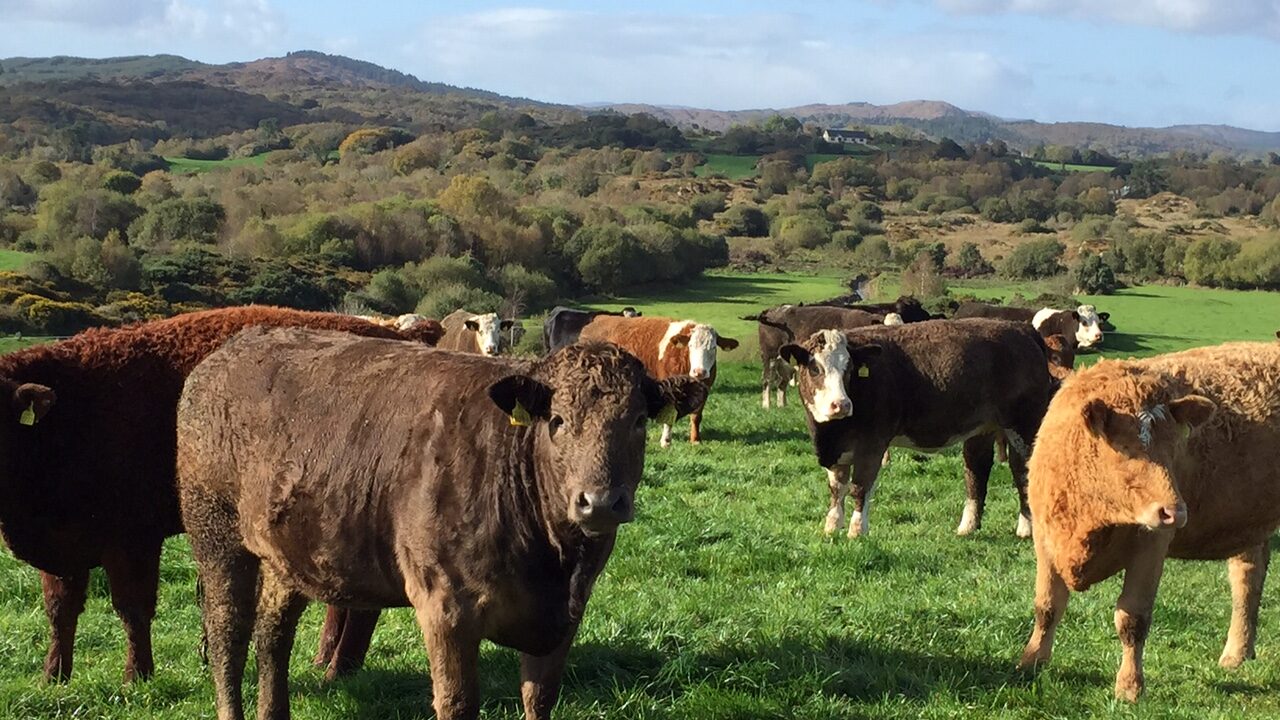As part of the Macra na Feirme’s Young Farmer Conference, those interested in beef production attended the suckler-to-beef farm of Ger Dinnen, Kilnamarta, Co. Cork.
This was the second of a two-part beef tour with the first farm walk taking place on a 500-unit winter finishing unit.
Ger Dineen is a top performing suckler farmer based in Kilnamartra, Co. Cork, he currently operates a 50-unit sucker herd on 31ha and is a participant of the Teagasc/Irish Farmers Journal Better Farm Programme.
All bulls on the farm are finished at 16 months while excess heifers are sold for breeding.
According to Dineen, the gross margin on-farm has increased dramatically with an increase of €576/ha to €1,471/ha in 2014, with an expected gross margin of €1,500/ha for 2015.
This increase has occurred due to focusing on the two main pillars of the sucker system which are grassland management and breeding.
Impact of better breeding practices on beef farm profitabiltiy
According to Dineen, the farm has made an additional €10,000 on an annual basis by getting two things right: getting a live calf from each cow every year and having a tight calving period.
Presently, the farm has a calving interval of 370 days with is 42 days shorter than the national average of 412 days, this equates to a saving of €4,620 compared to the national average herd when Teagasc figures are considered, said Dineen.
On average, Dineen’s cows are producing 0.98 of a calf each year, this is also higher than the national average herd which sits at 0.83 calves/cow/year.
This difference in the number of weanlings produced equates to €120 per cow or an additional income of €6,000 generated across a 50-cow herd.
Bringing beef cows into heat earlier
The farm is a 100% spring calving AI herd with a system for grazing the cows and calves separately to bring the cows back in heat earlier.
This system was relatively cheap to set up added Dineen, while it is also time efficient as it only takes 15 minutes each day to separate the cows from the calves.
Dairy farmers can get their cows bulling at 35-40 days, but the suckler farmers can’t. The only way to control that is to separate your cows and calves, which is hard for the first couple of days, he said.
According to Dineen, this separation increases the activity of the cows at oestrus and it reduces the numbers of silent heats.
The cows and calves are separated for 10 days before breeding and a further three weeks after and, according to Dineen, a lot of the cows are bred within a 4-5 week period, which has a positive impact on the calving interval.
Dineen added that the activity drops when the cows and calves are grazed as one herd, but the calves on-farm are always allowed graze one paddock ahead of cows through the use of a strip wire.
“When I put the cows and calves back together following the four week period a lot of the activity stops,” added Dineen.
Cow type – Emphasis on milk and beef carcass
The Dineen’s herd is focused on maternal traits with a high focus on milk and beef carcass traits. Currently, it is one of the top performing herds in the country in terms of replacement index.
The herd consists of a mixture of Limousin and Simmental cross cows, which has been the backbone of the farm’s breeding system over the last number of years.
A flashy cow might look well, but she might have an ordinary calf. The good looking cows tend to put condition on their own back rather than milk into the calf, said Dineen.
But Dineen is currently in the process of adding Saler bloodlines to reduce cow weight. The cows on the farm tend to be quite large, with the vast majority of them weighing in excess of 800kg.
However, this additional weight has had very little impact on the production capabilities of the herd with cows weaning bulls and heifer at 391kg and 377kg respectively at 7.8 months of age.
Dineen added that he has weighed calves on his farm for the last 20 years, and he has set high average daily weight gain targets of 1.75kg/day.
According to the Co. Cork farmer, he has achieved these targets on two occasions, adding that a cow with lots of milk and good grassland management are critical to achieve this average daily weight gain target.
Grassland Management for the beef herd
The Dineen’s farm setup is a grass-based, spring-calving system. The stocking rate on farm has increased from 1.4 to 2.9LU/ha.
The top performing paddocks on-farm are growing in the region of 18t DM/ha (Dry Matter) while the farm is growing 11t/ha on average. Poorer performing paddocks are identified on an annual basis and reseeded, said Dineen.
Calving on farm coincides with the onset of grass growth which begins in late January.
According to Dineen, the system is very much focused on getting as much grass into the animal as possible, but he added that farmers considering a similar enterprise should have adequate supplies of silage.
If you do not have enough silage I would not advise you on doing this as you need something to fall back on, said Dineen.
According to Dineen, the cost of keeping an animal at grass is considerably less than producing the same animal on a silage and concentrate diet.
The cost of keeping a weanling at grass is relatively cheap at €0.30/day, which is a considerable cost saving compared to similar production from silage and concentrates which costs in the region of €2.50-3.00/day, said Dineen.










